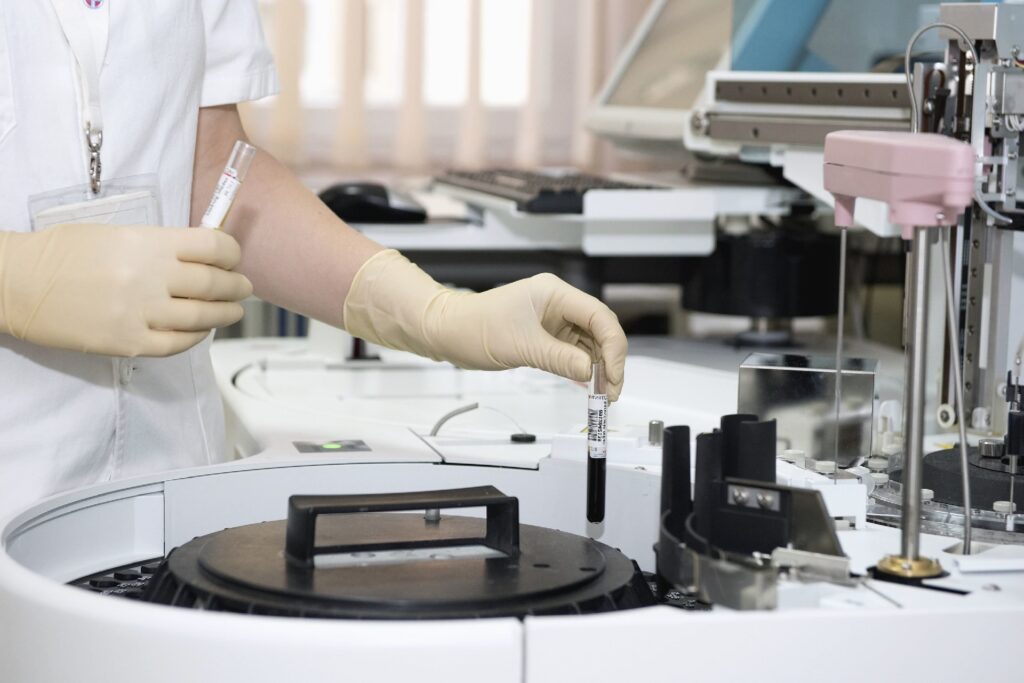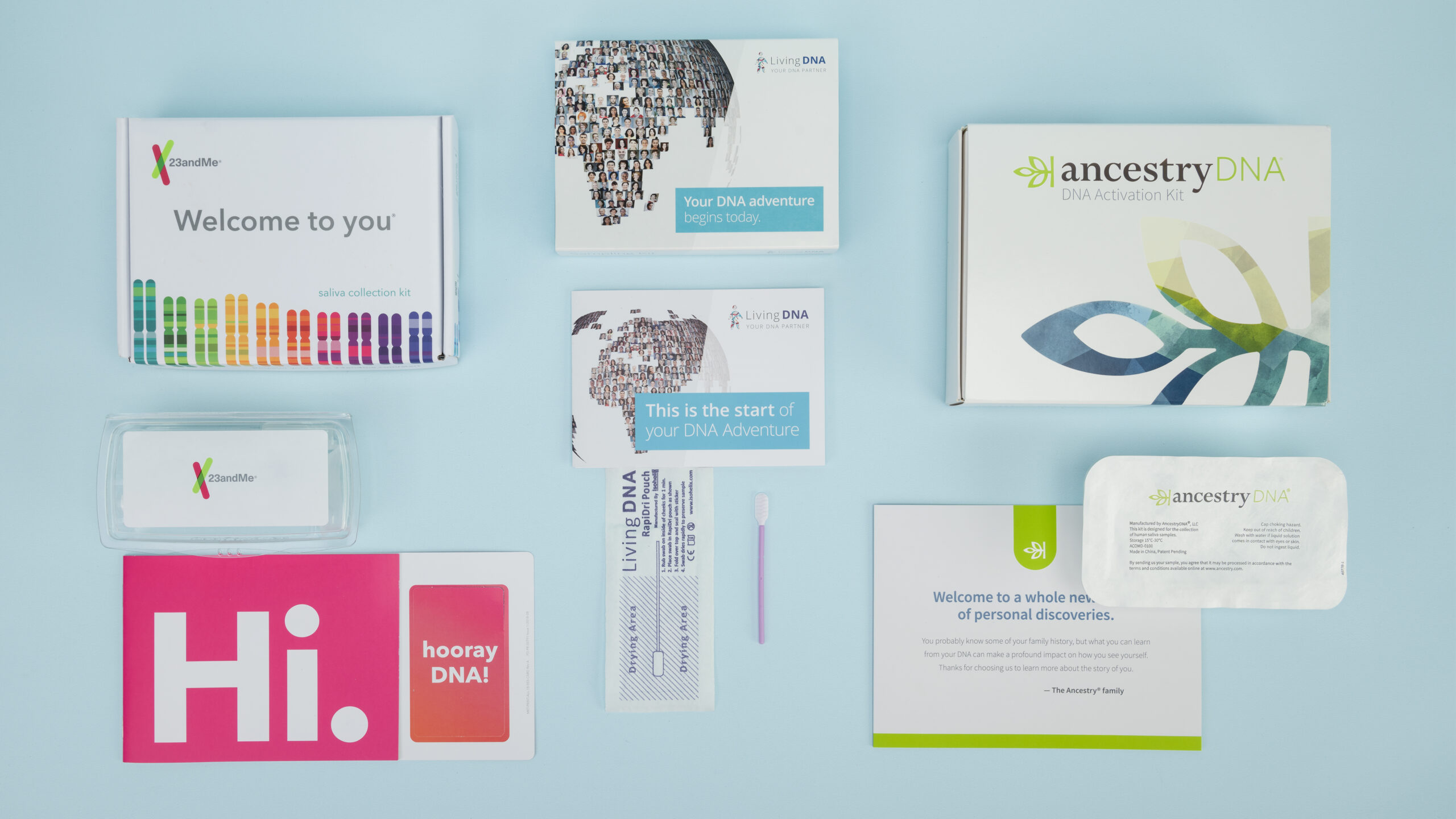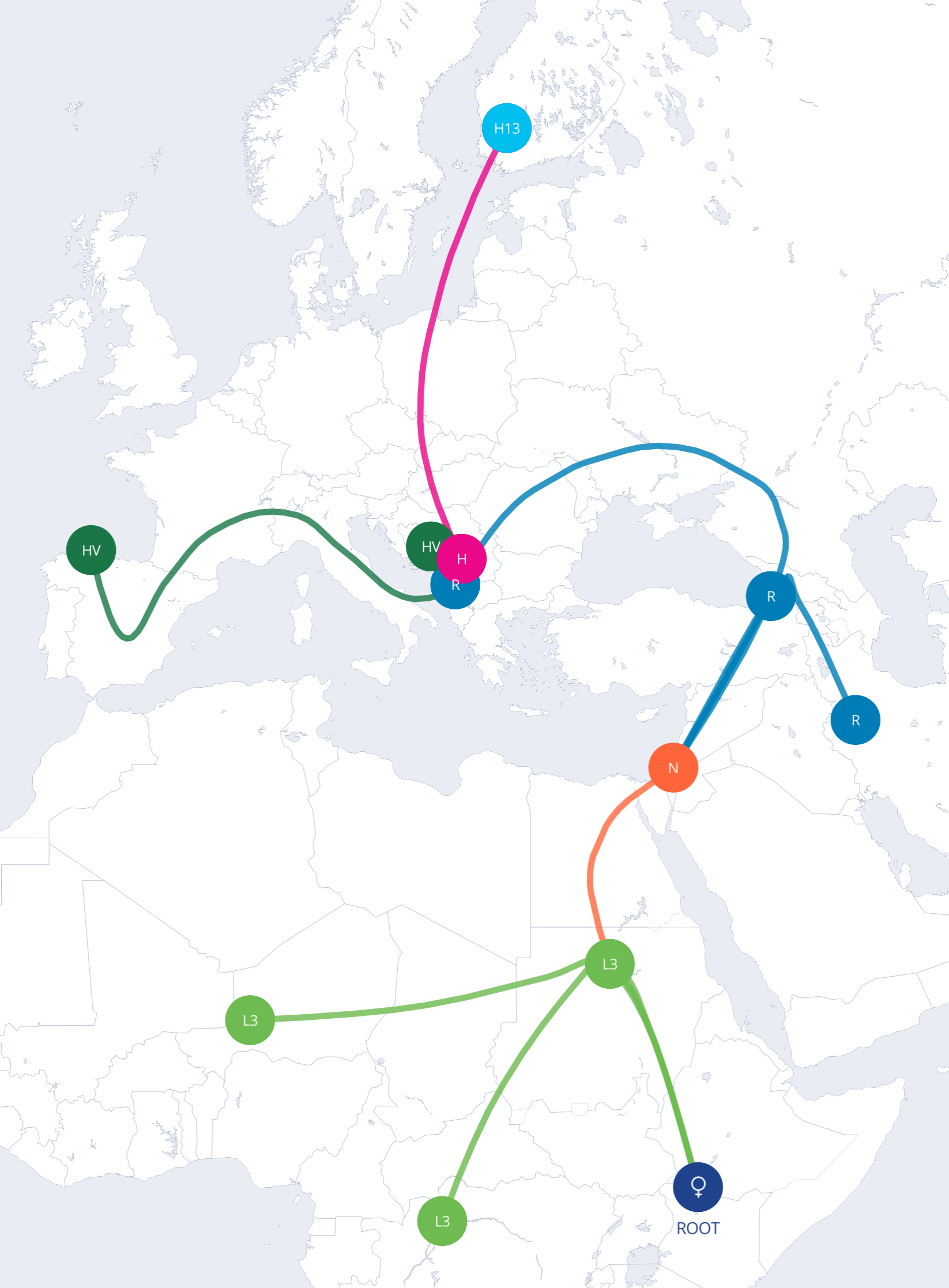

In This Article
In This Article
DNA testing (or genetic testing) is a handy tool for tracing family history and understanding health conditions. There are many DNA tests, each with a specific purpose and focus on different parts of your genes or even entire genome sequencing.
Genetic testing involves studying your genetic material to learn about your family background, health, or biological connections.
For example, some genetic testing companies offer information about your heritage. They use ancestry DNA testing to identify your blood relatives. Other types of DNA tests are also used by law enforcement to solve crimes (forensic testing).
Let’s look at the different types of genetic testing and what information they reveal about you.

DNA tests can be classified according to the DNA type they’re testing. Most at-home genetic testing companies also use these types to provide information on a person’s ethnicity.
Geneticists mostly use Y-chromosomal DNA testing (Y-DNA) on samples from biological males. Fathers pass down Y-chromosomes to their sons that have been relatively unchanged for generations.1
Gene experts can use this test to trace or gain information about patrilineal or male line descendants. It can provide further information beyond six generations on your direct paternal line.
Y-DNA testing may help you find relatives on your father’s side. It’s also a good test if you have any questions about paternity.
Y-DNA tests can be limited to biological males. However, a woman can have her close male relatives undergo the test.

Mitochondrial DNA testing (mtDNA) can track your matrilineal or mother’s female line. Biological fathers don’t influence this line.2
Mothers pass down mitochondria—or the powerhouse of cells—to their offspring through their egg cells. The mitochondrial DNA doesn’t change much for generations. Both sons and daughters inherit their mother’s mitochondria. Unlike the Y-DNA test, everyone can undergo mtDNA tests.
mtDNA tests can often fill gaps and track down female ancestors that may be missing in historical records because of changing surnames after marriage.
mtDNA testing reaches further back than the five to six generations and can provide you with your maternal haplogroup.
A haplogroup refers to individual branches or groups of closely related branches on the world family tree. People from a haplogroup can trace their roots to common ancestors.
Autosomal DNA testing studies most of the 22 pairs of chromosomes inherited from your parents. It can trace your blood relatives from both paternal and maternal sides.3
Your autosomes hold more information than either Y-DNA or mtDNA. The data they contain can help you track your close or even distant relatives. Anyone can take autosomal DNA tests regardless of gender, but your genetic testing results will not include any information about your haplogroup.

Know Your DNA Reviews

Don't miss out on the opportunity to learn more about yourself. Read our best DNA test page to find the best one for you.
DNA testing companies offer a wide range of tests. When deciding which one to take, think about what you want to get out of it.
Ancestry tests may provide information on where your common ancestors might have come from known as their geographic origins. This type of genetic testing can also help you discover your ethnicity.
These tests can help you find your relatives, sometimes as distant as your fourth or fifth cousins.
This genetic testing method can benefit people who don’t know their ancestry, such as adoptees or descendants of displaced people.

Some major consumer testing companies like AncestryDNA and 23andMe offer additional tests like traits tests to your DNA results.4,5
Traits tests give you insights into the characteristics that make you unique. They explore how your DNA can influence fitness, appearance, and sensory attributes.
However, the results they provide are more like predictions. The traits included in the testing can range from eye color to taste preferences.
Health risks genetic tests analyze the likelihood of developing several health conditions based on environmental factors and gene variants. They are a reliable type of diagnostic testing.
This type of genetic testing can predict your risk for common types of genetic diseases such as Celiac disease, Alzheimer’s, cystic fibrosis, and particular types of cancer.6
However, remember that these predictions are only a part of your risk profile. Your genes are just one of many things that affect your chances of developing illness.
Suppose you’re concerned about being at risk for genetic disorders due to your family history. In that case, you may consult a genetic counselor.
A genetic counselor can better explain DNA testing for genetic conditions and help interpret results.
DNA testing is considered the most accurate testing method available for determining paternity.

A paternity DNA test proves the biological connection between a father and a child. In some cases, it can disprove a man’s father’s status.
The test compares their DNA samples. Since children inherit half of their genes from their biological fathers, they should have common genetic markers.
A gene expert can run an avuncular or aunt or uncle DNA test between the father’s siblings and the child. They can use this genetic test to prove paternity in case the father isn’t available for testing.
However, the participating siblings should be full brothers or sisters. Full siblings share 50% of their DNA.
The avuncular test result has a 25% shared DNA benchmark between the child and the aunt or uncle to confirm paternity.

A grandparent DNA test can replace paternity testing in proving the biological link between an alleged father and a child.
Testing the biological father’s parents can help a DNA company to recreate the father’s DNA. They can compare the reconstructed DNA with the child’s DNA to confirm paternity.
If only one grandparent takes the genetic testing, the results may be inconclusive. For better accuracy, both grandparents should undergo the grandparent DNA test.
Know Your DNA Reviews

Looking for a DNA test that's accurate and can tell you about your health and heritage?

